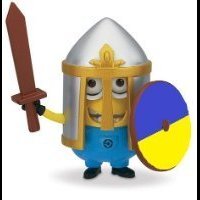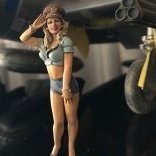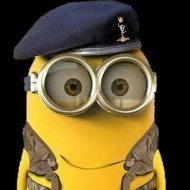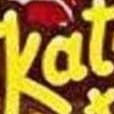Studebaker US6-U3 US Military Truck (35490)
1:35 ICM via H G Hannants Ltd
Before WWII, Studebaker began development of a 2.5-ton truck for military and civilian use, that was capable of working equally well off-road and on, with a 6 x 6 drivetrain giving it good grip in all weathers. It was up against substantial competition however, and other designs were found to have better performance under the conditions prevalent in locations where the type was to be used, the Studebaker being better suited to cold weather operations. The first trucks arrived in the USSR in 1941 under the Lend/Lease agreement, where it was well-liked, resulting in Soviet Russia being the major overseas operator of the type, calling it the ‘Studer’ in their service, where they adapted it to various roles, including most famously as a Katyusha rocket launcher.
It was powered by a 5.2L straight-six petrol engine that could output around 86hp and drove all six wheels, while the over-engineered engine boasted a low compression ratio that made it extremely reliable. It was its reliability and ruggedness that endeared it to its operators and drivers, and inspired Joseph Stalin to write a note after the war congratulating Studebaker on the design of the vehicle, and telling them of how useful it had been to their war effort. Many Studers were used post WWII in the Soviet Union, often with their military equipment removed. Even after retirement, the cab and general configuration was also used as the pattern for the GAZ-51 truck, although heavily modified due to technological progress in the meantime.
The Kit
The origin of this kit stems from 2007, when it was first released, but there have been many variants and additional parts added to the tooling in the interim, and it still gives the impression of being a thoroughly modern kit, with some impressive detail. The kit arrives in a top-opening box with the usual captive flap on the lower tray, and inside are five sprues of various sizes in grey styrene, a clear sprue in a separate bag, and a decal sheet between the pages of the colour printed instruction booklet that has profiles of the decal options on the rearmost pages. As already mentioned, detail is good, and the kit is a full chassis offering, with engine, cab, chassis and bodywork all provided, including a rather complex, single-part transmission system that is found under the ladder chassis.
Construction begins unsurprisingly with the ladder chassis, spacing the two main rails apart with six cross-members of various designs, some of which are made from 2, 3 or four parts, plus more dotted around the chassis, and a pair of leaf springs at the front, which locate in recesses in the outer faces of the rails. The chassis is finished at the ends by a large bumper bar at the front, and a pair of sprung R-shaped forms on either side of the towing shackle. The engine is next, basing the work on a two-part block with separate cylinder head, end caps with fan-belt moulded into one end, air intake box and pathway, plus other ancillaries, and the fan itself. The gearbox is created from three parts and is mated with the rear of the engine, lowering the motor into the chassis and coupling up the radiator assembly, which has been made from inner and outer faces, plus header tank and feeder hose that links to the top of the engine, adding the exhaust system under the engine, leading back to a separate muffler that has the exhaust moulded-in, exiting the side of the chassis behind the cab. The monolithic transmission system is fleshed out with separate halves of the differential castings, plus half the casing of the transfer box between the front and rear wheels. A steering linkage is added to the front axle, and the completed assembly is then installed under the chassis, linking the first drive-shaft to the rear of the gearbox, and locating the three axles onto their mountings. At this stage the rear axles don’t yet have their springs, first needing the central mount between the twin axles, after which the inverted leaf springs, dampers, and tie-bars can be installed, plus more linkages added to the front axle both for steering and damping. Two sets of running boards are attached to the chassis by L-brackets on each side of where the cab will be, accompanied by a three-part fuel tank on the left side, and a two-part spare wheel on the right. The US6 rolled along on eight wheels, four sets of pairs that are made from five parts, and two singles at the front, each made from main carcass and inner sidewall, trapping a disc in the centre, in case you wish to leave the wheels mobile. The completed wheels are attached to the six axle ends with care, then the bodywork can begin.
Work on the cab begins with the roof, windscreen frame and scuttle that are moulded as a single part, fitting the shallow-V shaped glazing from outside, and adding supports to the sides, with the dashboard inserted from beneath, applying three dial decals during the process. The firewall and kick board part has the lower sills and bottoms of the A-pillars glued to each side, mating them with the roof assembly once the glue has cured. The steering column has the wheel and separate boss applied to the top, joining it to the underside of the dash and kick board, then adding the three foot pedals around the base, mounting the four controls and gear lever on the floor, and the bench seat after building it from just three parts, including the base. The floor is slid in from behind, followed by the sides of the engine compartment, adding the battery into a recess in the left side after painting it and deciding whether to wire it into the engine. The front fenders are fitted to the sides, and the back is closed after inserting a lozenge-shaped window into the curved panel. Headlights with clear or hooded lenses are mounted on the wings along with side lights, with the grille applied to the front of the engine bay, the side extensions protecting the lights from frontal impacts. Crew doors keep the weather out, and have simple door cards moulded-in, to which the handles, winders and the window glass are installed, and these can be fitted open or closed as you wish. A pair of supports are fitted under the front of the wings, fixing the bonnet over the engine compartment, and adding outer door handles before mating the cab with the chassis, gluing the bottom of the steering column as you do so.
This boxing has an open load bed with ribbed floor, raised sides, and fold-up benches for carrying personnel, which can be stowed upright with the supports hanging vertically, filling a rather draughty space that would chill the kidneys of anyone sitting on the seats. Flipping the load bed over, two longitudinal support rails and a rear light bar are fitted, followed by the four mudflaps with U-shaped supports that hold them to the correct angle. The bed can then be glued to the chassis, aligning the tabs with the corresponding slots that are found on the top of the chassis rails. Six curved tilt supports are included in this boxing, and they can be stacked in the front of the load bed, or fitted in place by cutting the lower portions from the parts before gluing them in. The final step involves adding windscreen wipers, wing mirrors and towing hooks to the cab, all in pairs.
Markings
There are four decal options on the included sheet, with four profiles and a cab top scrap diagram for each one, and you wouldn’t be wrong if you guessed they were all green. From the box you can build one of the following:
United States Corps of Engineers, 1942
Rusty Dow’s Studebaker US6-U3 – Rusty was the first woman to drive on a military road in Alaska
US Army in Europe, 1944
US Army in the Far East, 1945
Decals are by ICM’s usual partners, which is a guarantee of good registration, sharpness and colour density, with a thin gloss carrier film cut close to the printed areas.
Conclusion
Whilst this isn’t the first boxing of this kit, it’s an interesting option with a clutch of non-Soviet examples, and as we lost our last one before we managed to review it, it was good to see it. How we managed to lose a substantial box like that remains a mystery to this day.
Highly recommended.
Available in the UK from importers H G Hannants Ltd.
Review sample courtesy of











